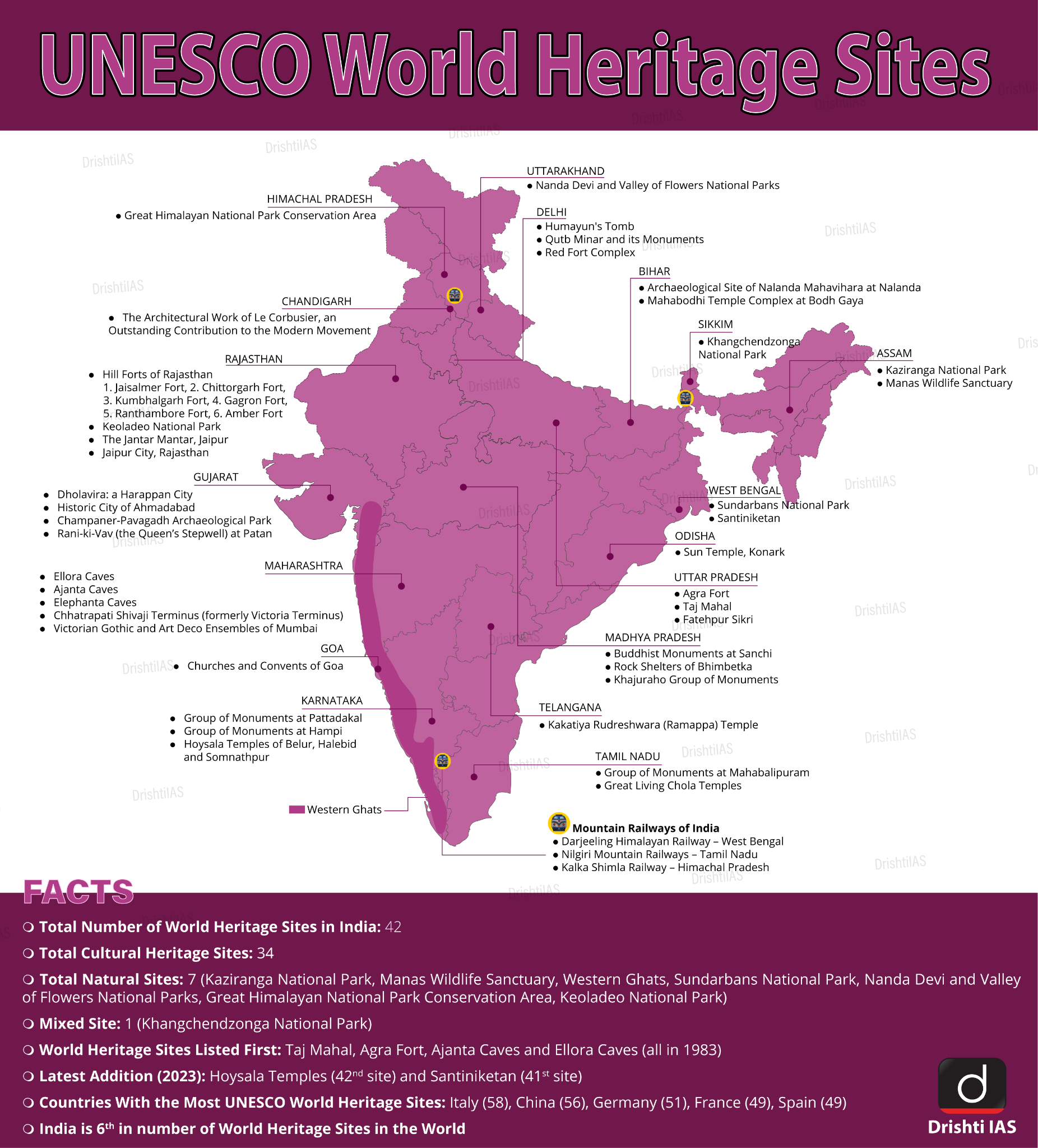Important Facts For Prelims
Quarrying Threatens Hampi
- 05 Aug 2024
- 5 min read
Why in News?
Recently, Hampi, a UNESCO World Heritage Site in the Vijayanagara district of Karnataka, has been experiencing stone quarrying activities in its vicinity.
- Environmentalists and tourists have raised alarms about the impact of these activities on the site’s historical and ecological integrity.
What are Key Facts About the Vijaynagar Empire and Hampi?
- Vijaynagar Empire:
- The Vijayanagar kingdom or “city of victory” was founded in 1336 by Harihara and Bukka, two brothers who had previously served in the army of Muhammad-bin-Tughlaq.
- They broke away from the Delhi Sultanate and established an independent state in Karnataka, with their capital city Vijayanagar located on the banks of the Tungabhadra river.
- The establishment of their kingdom was aided and inspired by the contemporary scholar and saint Vidyaranya.
- Vijayanagar Empire was ruled by four important dynasties named Sangama, Saluva, Tuluva, and Aravidu.
- Krishnadevaraya (1509-29) of the Tuluva dynasty was the most famous ruler of Vijayanagar.
- He composed a work on statecraft in Telugu known as the Amuktamalyada.
- Hampi:
- It is located in the Bellary District of Karnataka consisting of the remnants of the Vijayanagara Empire's capital city (14th-16th century CE).
- One of the unique features of the temples at Hampi is the wide chariot streets flanked by a row of pillared mandapas.
- Its famous places include the Krishna temple complex, Narasimha, Ganesa, Hemakuta group of temples, Achyutaraya temple complex, Vitthala temple complex, Pattabhirama temple complex, Lotus Mahal complex, etc.
- Hampi was declared a World Heritage Site by UNESCO in 1986.
- The Vijayanagara Empire was defeated by a coalition of Deccan sultanates in 1565 (Battle of Talikota), after which Hampi remained in ruins.
Vittala Temple:
- It was built in the 15th century during the rule of Devaraya II, one of the rulers of the Vijayanagara Empire.
- It is dedicated to Vittala (Lord Vishnu) and is also called Vijaya Vittala Temple.
- It features notable attractions such as a stone chariot and musical pillars, with the stone chariot being depicted on the Rs 50 currency note.
Hampi Chariot:
- It is among three famous stone chariots in India, the other two being in Konark (Odisha) and Mahabalipuram (Tamil Nadu).
- It was built in the 16th century by the orders of King Krishnadevaraya, a Vijayanagara ruler.
- It is a shrine dedicated to Garuda, the official vehicle of Lord Vishnu.
Virupaksha Temple:
- It is the 7th-century Shiva temple in Hampi, Central Karnataka.
- Lord Virupaksha, also referred to as Pampapathi is the main deity in Virupaksha Temple.
- It was built in the Vijayanagara style of architecture and was built by Lakhan Dandesha, a nayaka under the ruler Deva Raya II of the Vijayanagara Empire.
Vijayanagara School of Temple Architecture
- Diverse Structures: It encompassed temples, monolithic sculptures, palaces, official buildings, cities, irrigation systems, step wells, and tanks.
- Blend of Styles: The architecture uniquely integrated Hindu and Islamic elements.
- The features of the temples were:
- The walls of the temples were highly decorated with carvings and geometrical patterns.
- Goupurams were now built on all sides.
- Monolithic rock pillars
- Generally, temple pillars have a mythical creature Yali (Horse) engraved in them
- More than one mandaps were built in each temple. The central mandap came to be known as the Kalyan mandap.
- The concept of secular buildings inside the temple premises was also introduced during this period.
- Notable structures include Mahanavami Tibba, Kalyana Mandapas, and Hazara Ram Temple. Decorative elements often featured horses and Raya Gopurams (grand gateway towers).
UPSC Civil Services Examination, Previous Year Questions (PYQs)
Q1. Which one of the following statements is correct? (2021)
(a) Ajanta Caves lie in the gorge of Waghora river.
(b) Sanchi Stupa lies in the gorge of Chambal river.
(c) Pandu-lena Cave Shrines lie in the gorge of Narmada river.
(d) Amaravati Stupa lies in the gorge of Godavari river.
Ans: (a)





